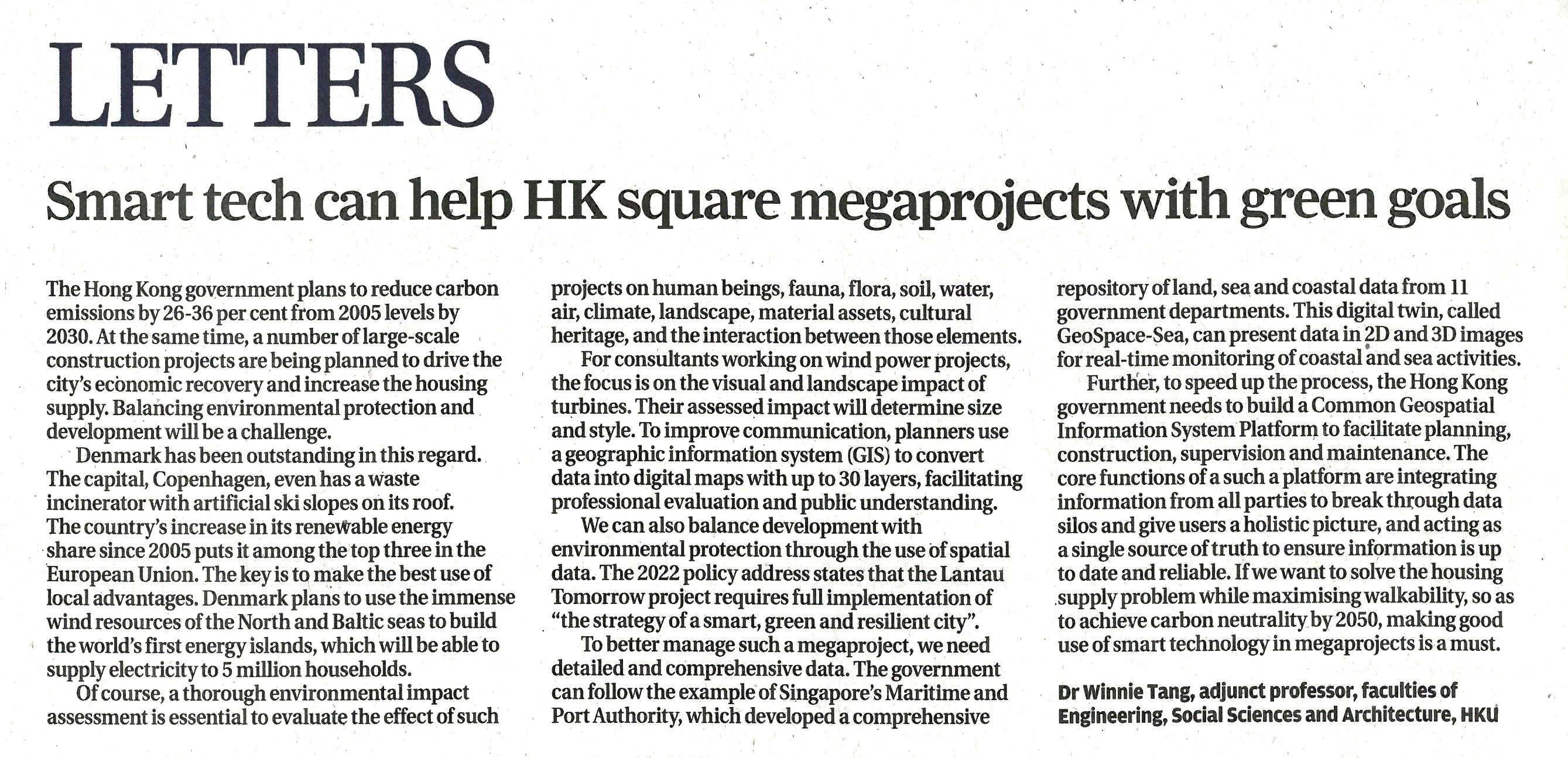網上版請按此

Smart tech can help HK square megaprojects with green goals
The Hong Kong government plans to reduce carbon emissions by 26-36 per cent from 2005 levels by 2030. At the same time, a number of large-scale construction projects are being planned to drive the city's economic recovery and increase the housing supply. Balancing environmental protection and development will be a challenge.
Denmark has been outstanding in this regard. The capital, Copenhagen, even has a waste incinerator with artificial ski slopes on its roof. The country's increase in its renewable energy share since 2005 puts it among the top three in the European Union. The key is to make the best use of local advantages. Denmark plans to use the immense wind resources of the North and Baltic seas to build the world’s first energy islands, which will be able to supply electricity to 5 million households.
Of course, a thorough environmental impact assessment is essential to evaluate the effect of such projects on human beings, fauna, flora, soil, water, air, climate, landscape, material assets, cultural heritage, and the interaction between those elements.
For consultants working on wind power projects, the focus is on the visual and landscape impact of turbines. Their assessed impact will determine size and style. To improve communication, planners use a geographic information system (GIS) to convert data into digital maps with up to 30 layers, facilitating professional evaluation and public understanding.
We can also balance development with environmental protection through the use of spatial data. The 2022 policy address states that the Lantau Tomorrow project requires full implementation of "the strategy of a smart, green and resilient city".
To better manage such a megaproject, we need detailed and comprehensive data. The government can follow the example of Singapore's Maritime and Port Authority, which developed a comprehensive repository of land, sea and coastal data from 11 government departments. This digital twin, called GeoSpace-Sea, can present data in 2D and 3D images for real-time monitoring of coastal and sea activities.
Further, to speed up the process, the Hong Kong government needs to build a Common Geospatial Information System Platform to facilitate planning, construction, supervision and maintenance. The core functions of a such a platform are integrating information from all parties to break through data silos and give users a holistic picture, and acting as a single source of truth to ensure information is up to date and reliable. If we want to solve the housing supply problem while maximising walkability, so as to achieve carbon neutrality by 2050, making good use of smart technology in megaprojects is a must.
Dr. Winnie Tang
Adjunct Professor, Department of Computer Science, Faculty of Engineering; Department of Geography, Faculty of Social Sciences; and Faculty of Architecture, The University of Hong Kong